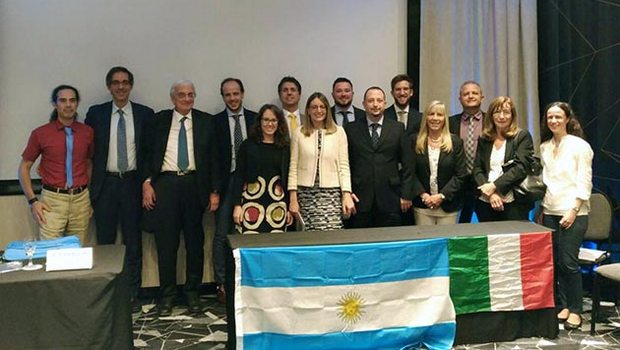Argentina to adopt F-gas training

The European F-gas refrigerant training and certification scheme is to be emulated in Argentina as the country seeks to move to low GWP alternatives.
Inspired by the European contractors group AREA and the EU-funded Real Alternatives 4 Life project, the training sessions will start in 2018, reports the Italian training company Centro Studi Galileo (CSG).
“Training and certification of technicians is the only direction to take in order to guarantee a safe future for the systems and the servicing technicians working on them,” said CSG’s Marco Buoni following conferences in Buenos Aires and Rosario last week.
Ten manufacturers including Alfa Laval, Carel, Chemours, Dorin, Epta, Embraco, LuVe, and end users such as Inres Coop presented their innovations at the conferences.
The HCFC R22 is still widely used in commercial refrigeration in Argentina. In 2016, usage of R22 amounted to 6,000 tons, while the total for HFCs was 2,000 tons.
“We would like to move directly to alternative refrigerants without passing through HFCs,” Laura Beròn, coordinator of Argentina’s Ozone Office for the Ministry of Environment told the conference.
Francesco Mastrapasqua, EPTA’s refrigeration systems sales and marketing manager, revealed: “We already have 11 supermarkets with alternative refrigerants in this country working with CO2 transcritical systems. They could be a leading example for the widely expanded network of supermarkets in the country, which is mostly condensed in the three provinces of Buenos Aires, Cordoba and Mendoza.”
The Argentinian Ministry of Environment has also announced several certification sessions as part of United Nations Industrial Development Organisation (UNIDO) projects to prepare technicians for the transfer to new low GWP alternative refrigerants.
Coop has announced that due to the F-gas phase-down, all future installations in its supermarkets will use alternative refrigerants, either CO2 or new synthetics depending on the bid and the technical requirements. The forecast is that around 50% of new installations will be CO2 cascade systems.
